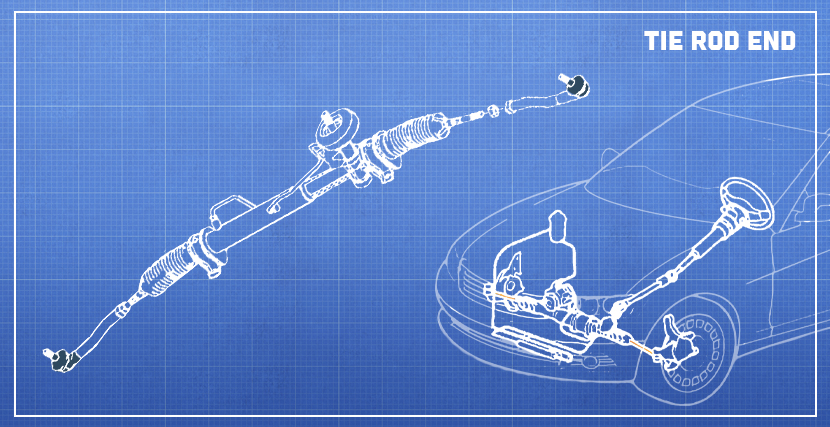Tie Rod End
The tie rod ends are what connects your steering system to the front wheels. They are the final links of your steering linkage that are used to attach it to the steering knuckles, which, in turn, house wheel hubs that hold your front wheels. When you turn the steering wheel, your steering linkage with tie rods on its ends moves the wheels into a desired direction.

Your tie rod ends may vary in size and form depending on the type of your steering system. If you have a heavy-duty truck or utility vehicle, most likely your vehicle is equipped with a recirculating ball steering system. In case you drive a passenger car or lightweight truck, it should utilize a rack-and-pinion assembly. Both of them perform the same function by multiplying the steering effort and delivering it to the front wheels, but do their job in a different way.
Recirculating ball steering systems feature a steering box that connects the steering shaft to the pitman arm. When the steering wheel is turned, the steering shaft moves the mechanism inside the steering box, which then moves the pitman arm. The latter is connected to the steering linkage that consists of a center link, idle arm and tie rod ends, which are the final links of the linkage. They connect the linkage to the steering knuckles, allowing for transferring steering motion to the front wheels. Tie rod ends always come in pairs, each of which is used for one side of a vehicle.
Rack-and-pinion steering systems are the most common type of steering systems. Just about every car today comes with a rack-and-pinion assembly because it is simpler, yet more efficient compared to steering gear boxes. A rack-and-pinion assembly features two main components, such as a pinion gear and a rack with teeth. The pinion is connected to the steering shaft and meshed with the rack. When the steering shaft spins, it moves the pinion gear, which, in turn, causes the rack to move the steering linkage. As for the linkage, it consists of inner and outer tie rod ends. The inner tie rods connect the rack-and-pinion assembly to the outer tie rods, each of which is attached to a steering knuckle.
Failing tie rod ends can cause a number of problems on the road. Here are just to name a few of them:
Uneven or excessive tire wear
Loose, damaged or worn-out tie rod ends will affect the vehicle’s alignment settings. As a result, your tires can wear abnormally or much faster than they should.
Grease leaks
Ball joints on tie rod ends are lubricated with grease. If the rubber boot that protects a tire rod gets damaged, the grease will drop out of it.
Vibration and shimmy
Tie rod ends must sit tightly inside the sockets. As they wear, they may not fit snugly, resulting in lots of vibration and steering problems.
Tie rod end replacement
Tie rod ends are maintenance-free parts, so they must be replaced if they break down. We recommend you to inspect them from time to time to avoid emergency situations on the road. If a bad tie rod end is detected, it must be replaced together with the other tie rod end. When replaced, a four-wheel alignment must be done to prevent steering problems and uneven tire wear.